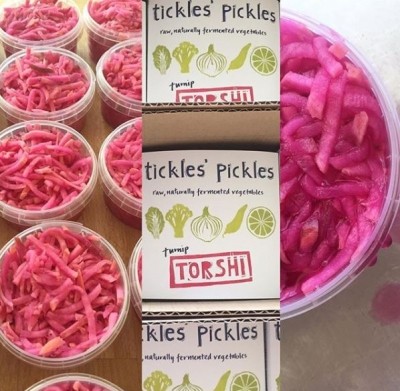Flavour Trends
Fermented foods: Where flavour and function combine

The practice of fermentation to preserve foods has been around for thousands of years. More recently it has achieved a niche of its own, providing a unique flavour that by and large has been familiar to the Western palette.
Sauerkraut is of course, familiar to Eastern European and Germanic cuisines, blending finely cut cabbage that has been fermented by various lactic acid bacteria, to produce a distinctive sour flavour as well as a long shelf life.
Sourcing new foods and flavours has only served to demonstrate the diversity of fermentation, introducing such foods as kimchi, fish sauce and miso from Asia, and kefir from Russia and Central Asia.
While initially hesitant, reception to these foods has been largely positive. According to Global Industry Insights, the market for functional foods (of which fermented products is one) has become the fastest growing sector, reaching $130 billion (€114 bn) in 2015.
The market is expected to grow at a rate of 7% CAGR each year, fuelled by product innovation and increasingly health-conscious consumers with higher disposable incomes. It seems that after a slow start, consumers are embracing a food with a unique health profile and bold flavours that expand their taste horizons.
“Since bacterial fermentation is essential in the production of dairy products traditionally regarded as healthy, like yoghurt and kefir, it has not been too difficult to persuade consumers that such foods would be even healthier if they contained certain strains of bacteria known to confer a positive impact on health and wellbeing when consumed in their still-live form,” said Simone Baroke, contributing analyst at Euromonitor International.
“We believe people’s taste buds have already shifted,” said Amanda Hamilton, director of nutrition for the start-up Rhythm Health.
“Even the most normal of households serves up an eclectic mix of exotic flavours. Besides, functional foods are a significant and growing trend in themselves with people looking at natural ways to support their health.”
Fermentation promises better flavour

Hamilton has made Kefir cultures central to her business offerings, which blend coconut milk, fruit juices and kefir cultures to make lactose-free fermented probiotic drinks and yoghurts.
The products contain a blend of lactic acid bacteria, including Lactobacillus Acidophilus.
In a sense her business model combines the health benefits associated with fermented foods with a palette of flavours that appeal to the everyday consumer.
This is especially relevant when combining ingredients that ordinarily wouldn’t complement each other. Rhythm Health’s coconut yogurt alternative includes Kefir cultures that are combined with coconut and sauerkraut.
“Coconut and sauerkraut may sound a little more unusual but coconut has been used as more of a savoury ingredient than a sweet ingredient for hundreds of years,” said Hamilton.
“The benefit of combining sauerkraut with coconut is that it is much more palatable on an empty stomach. We believe this widens the appeal of sauerkraut in line with its probiotic properties. The added lactose free kefir natural cultures increases its potency.”
An unusual flavour combination may not turn people off as much if the product tastes good. On the contrary, its unique selling point could very well be a sure fire way of gaining word of mouth recommendations and igniting a trend.
Fermented going mainstream

Hamilton believes that a large part of a flavour trend’s popularity is its availability in the mainstream. In Waitrose’s Food and Drink Report released in 2015, the supermarket chain identified fermented foods as a sign of changing shopping habits. Its decision to stock a range of fermented foods ‘reflected these shifting sands.’
“Making these foods more readily available to a market that’s readily seeking a more natural approach to health, specifically digestive health, means that they can become a more common part of dietary regimes,” explained Hamilton.
“We are already seeing influencer chefs, celebrities, bloggers and restaurants embracing fermented foods wholeheartedly. The trickle-down effect is a natural by-product of people wanting to try what they’ve read about or seen.”
























